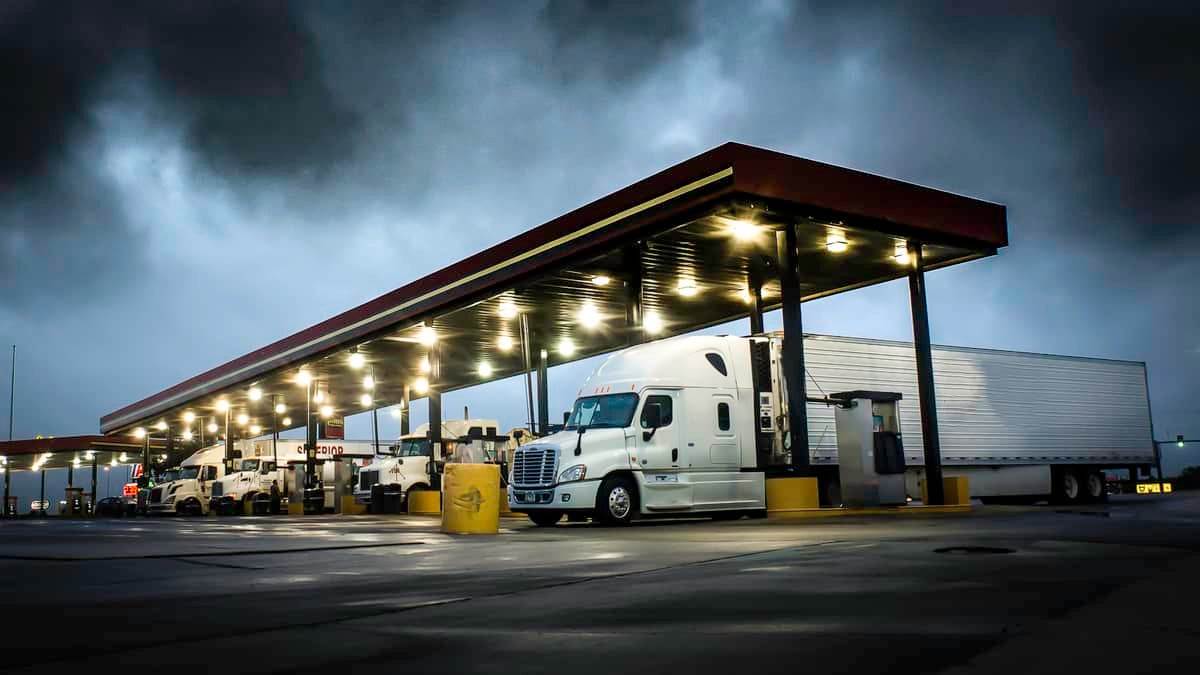As noted in multiple articles by Craig Fuller, the founder and CEO of FreightWaves, the 2022 freight market is in a cyclical crisis due in part to much lower freight volume and lower freight rates. In addition, the cost of diesel fuel (ULSD) has risen rapidly over the past few months, and has topped $6 per gallon in markets around the nation (and is even higher in numerous locations).
FreightWaves SONAR
Since its inception, FreightWaves SONAR has provided its subscribers with an extensive series of data on the wholesale price of diesel, which of course impacts the retail price of diesel fuel. The actual physical facilities where diesel and other fuels are dispensed to wholesale customers is known in the industry as the “rack.” Prices set by suppliers at those facilities are therefore known as “rack prices.” SONAR provides daily updates on dozens of specific markets as well as a national average price.
The chart above shows how the national average price can be compared to a specific city or regional price. For example, ULSDR.CHI shows the average wholesale price of diesel in the Chicago market, while ULSDR.USA shows the average wholesale price of diesel nationally. Different companies in a specific market will publish different rack prices (though the differences tend to be minimal). The local price is an average of those various prices.
Rack prices fluctuate
Rack prices are driven by three main components. The first is the commodity price of ULSD on the CME commodity exchange. The second is the differential between that price and the price of the key spot market from which a local market is supplied. For example, the Atlanta market is supplied with diesel by Colonial Pipeline; its pipelines run from the Houston area to the New York region. The Gulf Coast spot market is therefore a key component in setting the Atlanta rack price. Third, there can be competitive issues in a local area that will impact the rack price.
Rack prices set the general trend for retail prices. The correlation is not perfect, nor is it immediate. But over time, the rack price paid by the retailer to supply its retail outlets needs to be reflected in the price at the pump. If the retail price is too low relative to the rack price, the sale of retail diesel can become unprofitable. If the retail price is too high relative to the rack price, it’s likely that a competitor to the retailer can step in, supplied by fuel at a price significantly lower than the retail price, and grab market share.

For those companies and individuals with an exposure to the price of diesel, but that aren’t going to follow all of the various components to learn how prices were set, the rack price is a perfect barometer. First, it fluctuates almost daily. If there is movement in the commodity market on CME or the individual regional physical spot markets, like in the Gulf Coast, there’s going to be movement in the rack price. Retail prices, by contrast, may signal an “all-in” number but tend to move far more slowly. Just getting the price of ULSD on CME doesn’t tell you anything about individual market conditions in cities from Savannah to Spokane. But the rack price does. If you want to know more about fuel markets than just simply what’s the number at the pump, knowing rack prices is a must.

The impact of the price of ULSD on different audiences:
Carriers: Although retail prices do not move in lockstep with rack prices, over time there will be a correlation. Carriers can observe wholesale rack prices to get a sense of what direction prices are heading. SONAR charts also can help identify anomalies where a wholesale diesel market is moving up or down at a faster rate than national or regional averages. Fuel-buying decisions can be more efficient with that knowledge.
Brokers: A broker is going to be exposed to the price of fuel in much the same way a carrier is. The price of fuel will impact the price that the broker pays to acquire freight that needs to be moved, as well as obtaining the price of capacity to get it to its destination. Knowing the fuel price trends in various markets aids that process considerably.
Shippers: What direction is the fuel surcharge going to go? The SONAR data series is the best barometer. But there also are some fuel surcharges that are set to rack prices rather than to the weekly U.S. Department of Energy average retail weekly diesel price. The data in SONAR can provide a look at where those prices are going.
Author’s note: Information for this article was originally developed by Donny Gilbert, one of the FreightWaves Market Experts.












